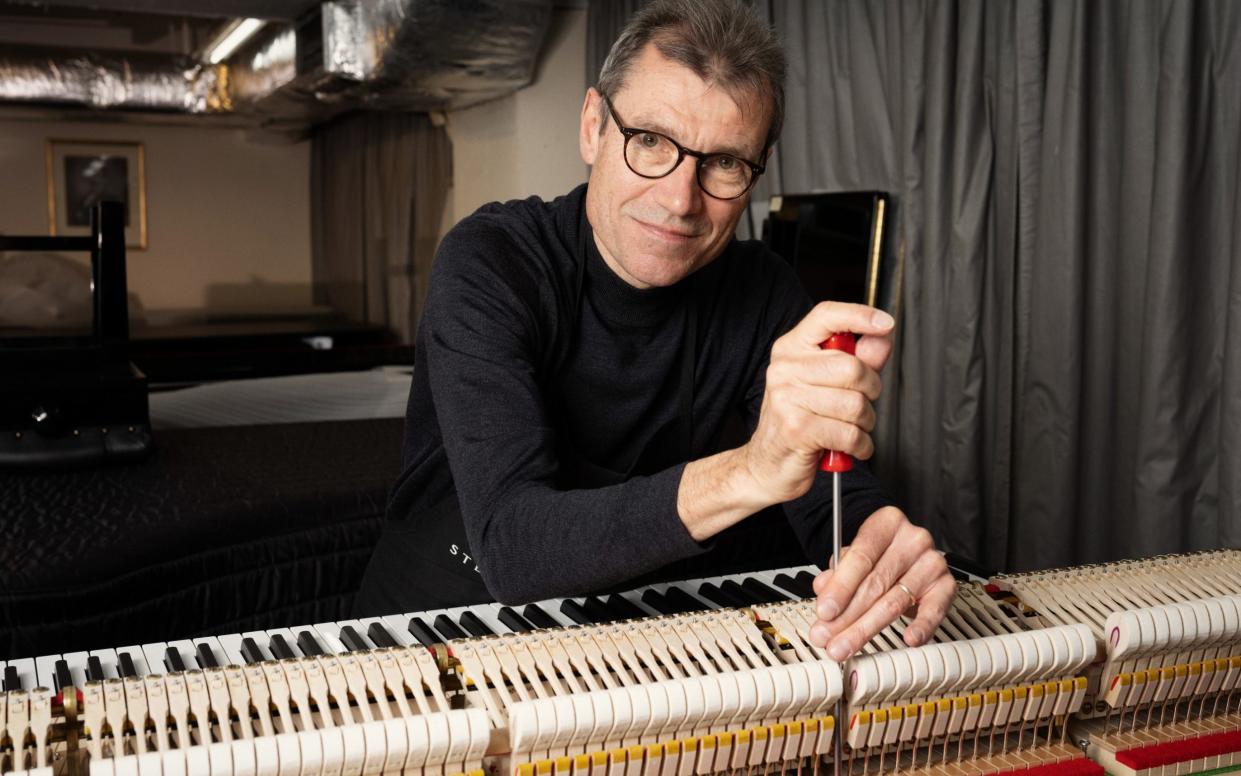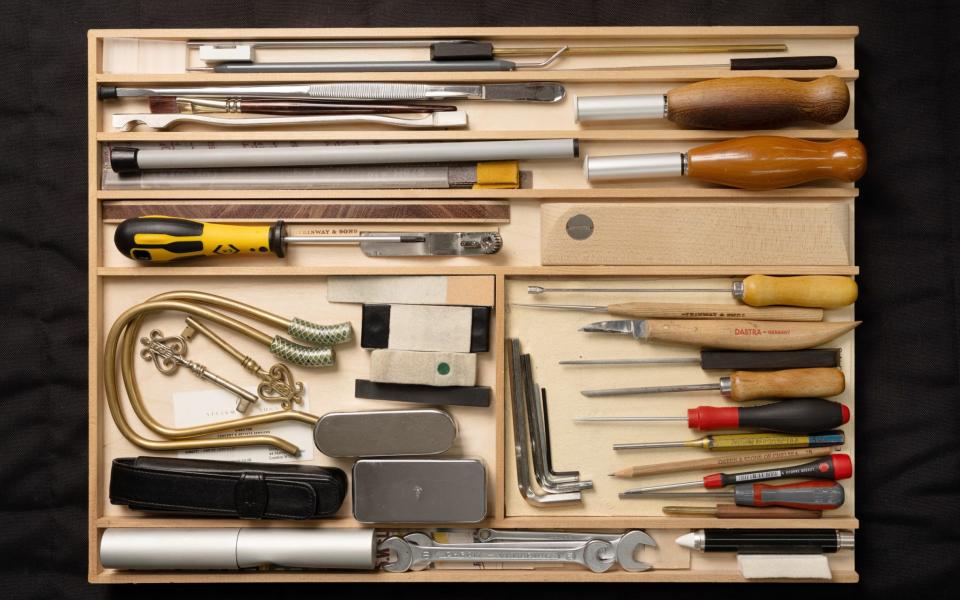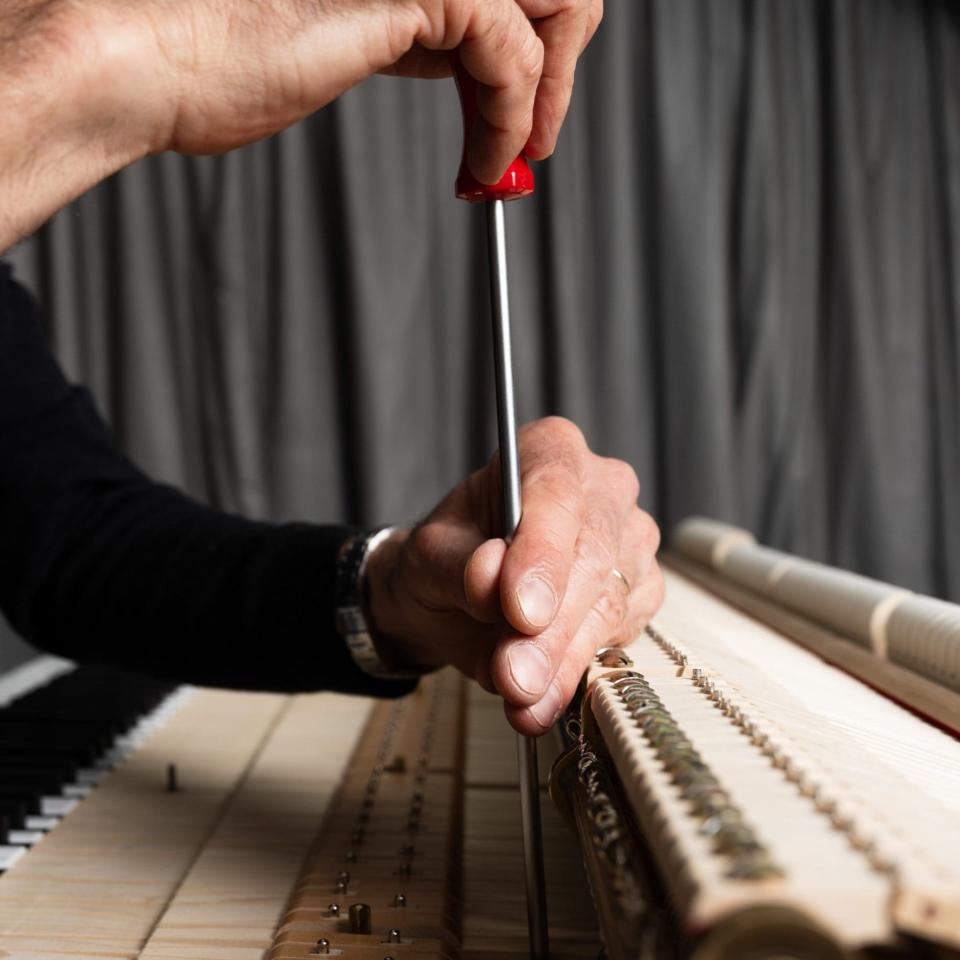‘Tchaikovsky causes a lot of problems’: meet the greatest piano tuner in the world

In the classical music world, a profession exists that feels as quaint as phrenology or book-binding – piano tuning. In the popular imagination, the piano tuner was an elderly man, probably blind, who annoyed everyone by banging on the same two keys for an hour, and yet achieved the miracle of making the old family upright seem passable.
At the other end of the scale are those master technicians who prepare the gleaming concert grands in the world’s great concert halls. The doyen of piano tuners is universally acknowledged to be Ulrich Gerhartz, director of concert and artist services at the London branch of the world’s best-known piano manufacturer, Steinway & Sons. He is the go-to technician for every venue in the UK which has in-house Steinways (which is nearly all of them) and he is on tu-toi terms with many great pianists here and worldwide.
Andràs Schiff, one of the world’s greatest pianists, tells me: “Ulrich is more than a piano technician, he is my friend. I trust him completely. He came with me on a South America tour where he had to work under difficult circumstances. The pianos were in terrible condition. After a day’s work, they were transformed. Like an alchemist, he made gold out of something else.”
When I meet Gerhartz in the Steinway workshop, just off Oxford Street in central London, it is clear that he has the breezy confidence and authority of someone who knows his craft inside out. All around him are the tools of his trade, some looking rather like surgeon’s scalpels, and half a dozen concert grands. “They are like my children,” he tells me.
Gerhartz, 58, was raised in Vienna and had aspirations to be an artist but his father, who worked in finance, told him he needed to learn a trade. He ended up being apprenticed to Steinway at their Hamburg headquarters in 1986, and moved to the London headquarters in 1990, where he’s been ever since.

Gerhartz heads a team of six, who divide the big London concert halls, the national venues and private clients between them. On a given day, Gerhartz may be busy at the workshop, at a venue or travelling with a top-rank pianist who is nervous about an unknown Steinway at an unfamiliar hall. Right now, he’s busy at the Hastings International Piano Concerto Competition.
I notice he refers to looking after the pianos. “That’s because tuning is only one aspect of what I do. The main aspect is to actually analyse the piano, see what its personality is, bring out that personality – because every piano is different.” That sounds implausible – how can a piano made in exactly the same way as a thousand others have a personality?
He explains: “Take the two resident Steinways at the Wigmore Hall in London. One is new and has a bright sound and quick response and is called simply ‘the new piano’. The other one, which is older, we call ‘the old lady’ because it has a gentler sound and is just right for accompanying singers.”
Could he recognise a particular piano in a blind test? “I could certainly tell if it was a Steinway or some other manufacturer, and I could probably spot a piano that I had looked after,” he says.

Unlike many domestic tuners, who carry round a digital device that sounds every note, Gerhartz prefers to do it all by ear, starting with the A above middle C. “The standard pitch is 440Hz, that means 440 vibrations a second, but I like to tune a little sharper, say 441 or 422 because that gives a brighter sound – but not too high because you start to lose the singing tone.” He starts by tuning the central octave between F above middle C to the one below, “When you sound two notes together it should make a certain number of beats. For instance, F to A makes seven beats. So I listen out for the beats to make all the intervals within that octave are correct and then I use those to tune the rest of the piano.”
Then comes the most mysterious part of the process, known as “voicing”. “I test the piano and ask myself, ‘how does the piano balance between bass and treble? Is one lighter or heavier than the other? Does it need to be more bright or less bright depending on the venue, and the nature of this particular piano I have under my fingers?’ ”
The aim is a perfect evenness of tone across the whole range, which is a tall order when the bass strings are almost two metres long and the highest strings barely 40mm. “If the piano’s bass is heavy, then you need to address it by voicing the hammers, which is adjusting the hardness or softness of the felt. The aim is to give the player the impression that their left and right hands get the same result for the same effort.”
When it comes to tuning for individual clients, who are mostly well-known pianists, Gerhartz has to be as much a diplomat as a technician. “Most of my clients, such as Paul Lewis and Evgeny Kissin, are really easy and charming. Mitsuko Uchida is very demanding in terms of voicing, but that’s fine because she always knows exactly what she wants. The most difficult ones are the pianists who are very demanding, but don’t really know what they want, or those who want to give the piano a special strange sound that is perfect for them but no good for anyone else. It takes a huge effort to put it back to normal afterwards, so I refuse to do this now.”

Finally comes the moment when Gerhartz’s careful work is tested in front of an audience. At major venues he or a colleague are always on hand in case anything should go wrong. “If you did your job properly a piano should stay in tune, even with pianists who have a very heavy touch like Evgeny Kissin. It’s the pianist’s touch which causes the wear and tear on a piano, more than the composer, though the big concertos by Rachmaninov, Tchaikovsky and Prokofiev can sometimes cause problems. One or two notes might go awry, and we would fix those in the interval.”
All this care and attention takes time, and time is money. So it’s not surprising that at a time of financial stringency venues are starting to cut corners. Gerhartz says this can create difficulties. “I was called to a major national venue, where the fleet of pianos hadn’t been serviced for almost 10 years. One of the pianos had suffered a broken string mid-concert and that should not happen. I did what I could in the time available to improve things but really things had been left too long. No one would think of driving a high-performance car without servicing it for 10 years.”
Another problem is that piano-tuning is a dying art, as few people are entering the profession. It is true that, once, blind people were actively encouraged, but Gerhartz says: “They have practically vanished now, because the course in tuning offered by the Royal National College for the Blind, in Hereford, no longer exists. We do have one partially sighted person here at Steinway, in Belfast, who does a great job, though he does need an assistant to help him now and then.”
Another reason is that the institutions which offer training in piano maintenance are shrinking in number. Only two remain in the UK, at the Piano Technology School in Rugby and Lincoln College in Newark. For Gerhartz this is a cause for concern. “If you look at music schools worldwide – Asia, North America, Europe, UK – there are so many thousands of students training to become pianists. And how many people are being trained to become piano technicians, compared to those who want to play? Very few. I try to do my bit by taking on apprentices here at Steinway, but it is alarming that no one is thinking about this, because it is going to become a huge problem.”
Indeed it is – because without the patience, skill and artistry of someone like Ulrich Gerhartz, the pianists’ art would be hobbled.